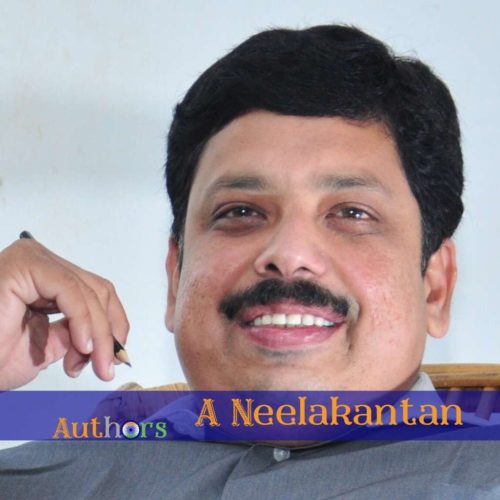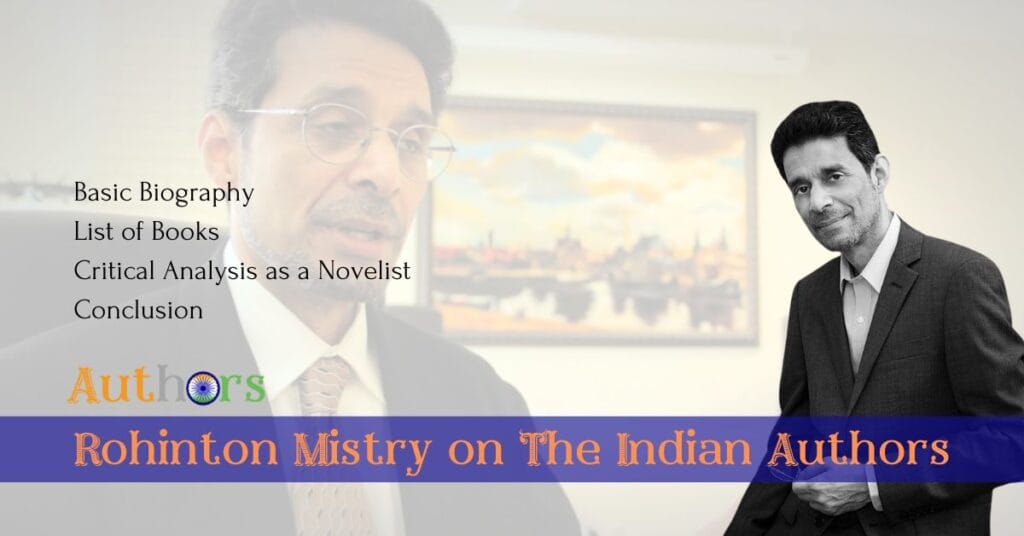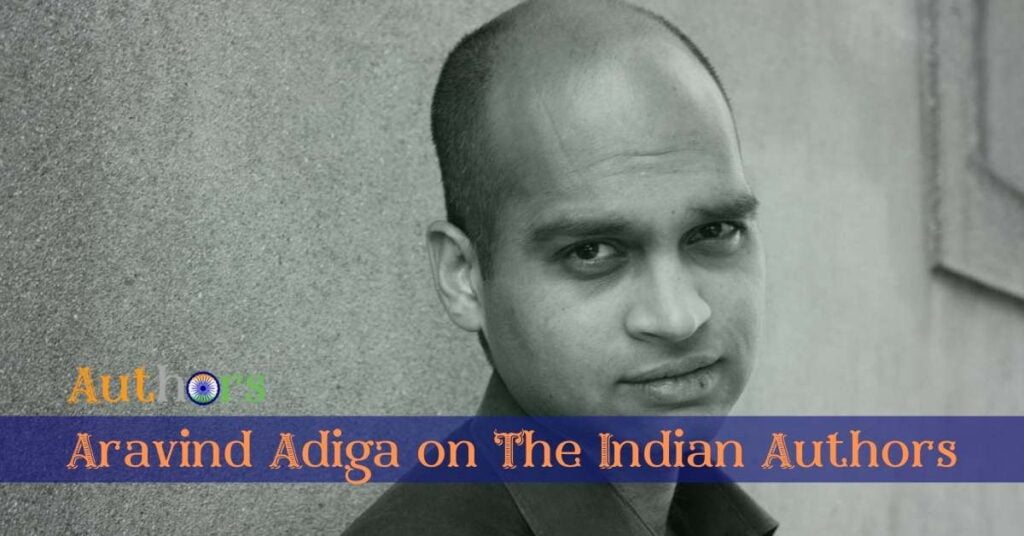Name: Anand Neelakantan
Genre: Religious, Mythological, Neo-narrative, Anti-Brahmin
Famous Books: Asura: Tale of the Vanquished, Ajaya: Roll of The Dice
General Introduction: Prolonged:
In India, there is a lot of support for you if you are doing something which generally goes against the belief of the majority. Before we get to our subject, Anand Neelakantan, this background is essential. History and geography have been a silent witness to it. In Indian literature, especially in the name of creative freedom and behind the dubious garb of fiction, many authors have emerged who are retelling the religious epics (with special attention of Hindu epics) in their own concocted ways with a caveat that the work does not mean anything other than fiction. The reality, however, is very different. The works of these authors are very perverse in nature. However, because the readers have humility and general tendency (belonging to one particular faith), they accept the ‘creative work’ without much questioning and rather appreciate the authors. In turn, these creative authors become more and more aggressive in their baseless attacks on faith, scriptures, epics and philosophy belonging to ancient Hindu or Sanatan Dharm. Still, the readers are generally welcoming with many, those who are genuinely hurt and oppressed by reading such literature, raise their voices. However, the criticism does not go beyond written work, article or just a digital show of anger unlike brutal murders and lawsuits in the cases of other faiths.
We are talking about Anand Neelakanthan, an Indian novelist who rose to fame by Making the cannibal Ravan a hero in his novel Asura: Tale of the Vanquished. He fancied some epic from Ravan’s perspective and wrote a novel which shows Brahmins, Devatas and Lord Ram in a very bad light. The rapist Ravan is shown as a champion of the causes of the marginalised. With many ambiguities in the book, he could still be successful in getting on the important round table where people with free-thinking sit with a bias, tilted on one particular side.
Writing is an art that serves more than one particular purpose. However, in the context of contemporary Indian English writing, you can not find any purpose at all, other than the obvious – wealth. Some writers are busy writing cheap romance books that are hard to digest for any literary reader and those who write in literary style are self-imposed intellectuals who will go to any extent to vomit their core agenda rather than writing for a constructive cause. Moreover, the third kind of authors in this category are very ‘dangerous’ and ‘harmful’ who try to walk the sinister paths that generally go against the popular and proven truths. Though a writer can do anything a writer wants, there must be a validity, a support system for the expressions presented and also a responsibility that goes side by side with creative freedom.
If Chetan Bhagat opened the vista of senseless romance for many young authors in the country to bet their 1-lakh rupaiya*, Amish Tripathi should be credited for opening a new dimension in Indian English literature that lures the ambitions of those writers who want to present a neo-alternative world of religious extrapolations where sense is subdued with personal whims. It is to be noted that most of such books, except a few where the writers only take substantial references from the past to posit their scenarios in the present as Ashwin Sanghi does, are erroneously fancied and the writers try to create an outrage knowingly so that they get the tickets to literary festivals and become overnight famous. Where shall I put Anand Neelakantan? Well, he fits in the category of authors who simply take the ambitions generated by Amish to a new level of erroneous imagination with many faults in the very thoughts that form the foundation of their works of fiction.
(* The 1-lakh rupaiya theory alludes to the idea that anyone in India can get his or her book published by spending money. Anand’s first book was also self-published. Way to go, self-publishing India!)
Early Life:
Anand Neelakantan was born in Thripoonithura, Cochin, Kerala. He has done his schooling there and further pursued engineering from the Government College, Trichur. He joined Indian Oil Corporation but a writer was always there deep within his heart. There is a very popular and interesting fact that the author once shared with an interviewer for a reputed print media company. He said that he was born in a village that had too many temples and his location was surrounded by those Gods’ abodes. He also stated that Ramayan was a household thing in his village. However, the most interesting thing is that Anand Neelakantan said he had a problem with these things – temples and Ramayan being common. And therefore, rather than being attracted by the good or the Dharmic side of the history, he made his refuge in the antagonist’s fort and began thinking about other possibilities. That’s how the writer in him began taking shape.
His Writings:
Blatantly speaking, it is only his out of the box thinking – his capacity to keep his readers intrigued by antagonising the protagonist and creating a wave of sympathy for the antagonist – that keeps his writing alive. Otherwise, if you try to weigh the technical aspects in his writing, you will find that his use of language, uneven employment of words, the structure of sentences and almost every other parameters on which a novel may stand are just average or a little above that. Even the narrative is clumsy but just because his tales are interesting to few people with otherwise interests in epics of Hinduism, he keeps pulling the cart of his fiction. Well, this is what happens when you have a bunch of engineers in the writing field trying to hijack the real discourse of contemporary Indian English literature. Their works, let me tell you, are way beyond any comprehension and cannot be scaled by any possible literary theory!
Anand Neelakanthan claims that he writes mythological novels. However, for such authors, intellectuals and historians, mythology means fiction written by Brahmins and other leading entities just to maintain that a few people were leading and a few people were trailing. However, from such mythological fictional works, which according to them is pure fiction, they pick up the instances that, somehow, fit in their agenda of showing the followers of Hinduism in a bad light and base their own version of fiction on those. So, they don’t accept things as reality when it comes to doing so but forge their version of realities very easily. Strange! In short, they will not believe that Lord Ram was real. However, they will say that Lord Ram was an ‘oppressor’ who troubled innocent Ravan!
It is strange that Anand Neelakantan writes in the very beginning of his books that he does not claim his writings to be based upon any religious sources. He also takes the escape route by adding that his works are works of fiction and any possible coincidence may just be coincidences. Names of the characters are just to put an extra layer of adventure and enthusiasm in fiction – playing so safe before you suggest that Ram could have violated the modesty of Mandodari!
However, amidst so much of criticism of his writing, Anand needs to be praised for his wit. He could easily have written some Chetan style romance or Durjoy style sensual sensation but he chose to write a different version of Amish not only to remain a step ahead but also a pedestal high. He chose his theme carefully. He got his audience right. He gave all them (who have hidden feelings for Ravan) an idea to celebrate. And this, he got his intellectual and liberal and secular and progressive and pluralistic and successful artist’s tag.
His works, Asura: Tale of the Vanquished, self-published as no mainstream publisher might have shown an interest, Ajaya: Roll of Dice, Rise of Kali: Duryodhana, The Rise of Shivagami, Vanara: The Legend of Baali, Sugreeva and Tara, take a shape of neo-history or a completely different stance on the history that we know till now. Though touting these works as fiction can easily help the author escape with whatever he says – be it marrying off a 6-years-old without any historical evidence or saying that Krishna had perverse intentions – these books have a bad impact upon the readers who are fragile and unknown of the real history.
Writers like Anand Neelkanthan knows the trick about how to be a best-seller in India. You don’t have to do anything just defame Hindu religion because they are the most tolerant people on the planet. Liberals and left-leaning authors, Marxists who have ceased to exist and readers with a different mindset will surely love you.
On a serious level, you will find his writings childish and far from logic. He says one thing and does the other very next moment himself. He picks his cards very wisely while knowing it is unfair in a card’s game to pick your cards from the deck once it has been distributed already. Still, what can stop an IIT graduate or an engineer turned author from doing what he likes? He traps himself in the turmoils of logic given by him and you will often find this in his books.
In his book, ‘Ajaya: Roll of the Dice’ he has tried to present Kauravs in bright light and Krishna and Pandavs in a bad light. However, he does not know that readers know the real story and his ‘fictional’ propaganda will not stay longer. If you are supporting Kauravas even in your fictions it means you are supporting the wrongdoings against women. You are supporting abuses against women and the very society, injustice over justice that is enough to show your hollow and empty mind. However, anything can be wrapped in the foil of fiction unless you ensure that your fictional slurs are against Ram, Krishna, Durga, Sita or Hindus, in short. The moment you even suggest something against a certain book that is claimed to have descended from the sky itself, you are all set to meet the fate that Salman Rushdie has met in the past.
His Major Books:
- Asura: Tale of the Vanquished – 2012
- Ajaya: The Roll of the Dice – 2013
- Rise of Kali – Duryodhana’s Mahabharata – 2015
- The Rise of Sivagami – 2017
- Vanara: The Legend of Baali, Sugreeva and Tara – 2018
Book Reviews: click the titles to read the reviews (in different tabs):
- Asura: Tale of the Vanquished
- Coming soon…
All his books are either antagonising the protagonists or creating a divide between people on the basis of north and south or just because of their race and colour. His writings go against the basic tenets of fiction writing.
Major Awards:
He has not any reputed award that is worthy enough to be mentioned here.
Conclusion:
To conclude The Indian Author’s take on Anand Neelakantan as a novelist, I will not exceed the section much longer. Many things about this novelist have already come out in the sections above. However, the most important part that I must highlight is that India is a progressive civilisation and it has always been so. Anand’s works are great examples to convince anyone who thinks that India is not progressive. See, we can tolerate the works by Chetan Bhagat as well as the works by Anand! Though he almost abuses the very basic belief with which almost all the children in India are raised but we offer him love and leading roles in our society. And still, this author has the temerity to extend in his fiction that our Bhagwan Ram was an oppressor who terrorised the poor and gentle and kind and sporting Asurs. Ah!
Written by Amit Mishra for The Indian Authors





1 Comment. Leave new
This is an article with many new perspectives and I admire the courage of the writer of this piece. Anand Neelakantan’s works need to be analysed objectively and this is certainly a perspective that no popular critic talks about. Appreciate what’s done here.